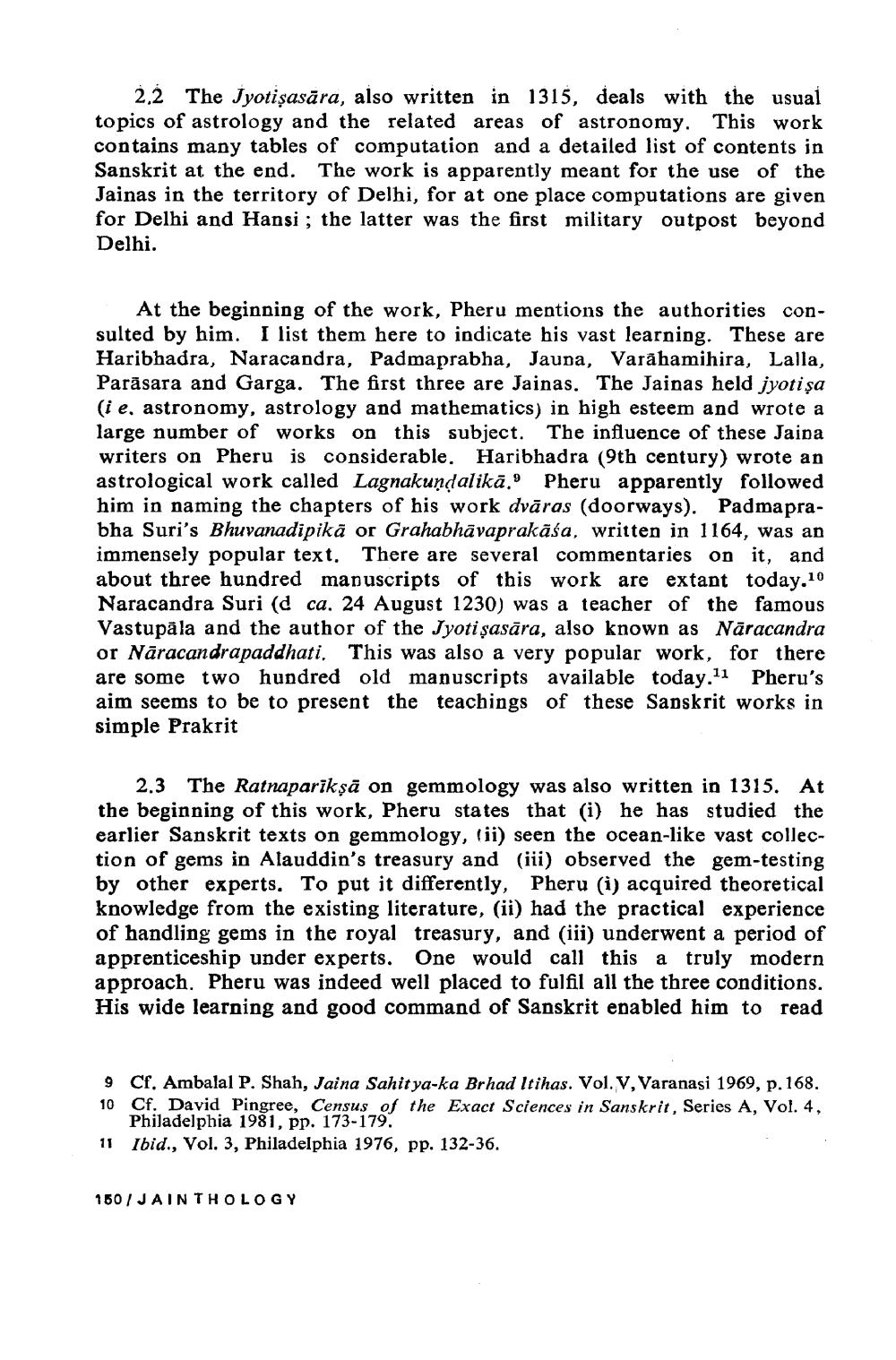________________
2.2 The Jyotisasāra, also written in 1315, deals with the usual topics of astrology and the related areas of astronomy. This work contains many tables of computation and a detailed list of contents in Sanskrit at the end. The work is apparently meant for the use of the Jainas in the territory of Delhi, for at one place computations are given for Delhi and Hansi; the latter was the first military outpost beyond Delhi.
At the beginning of the work, Pheru mentions the authorities consulted by him. I list them here to indicate his vast learning. These are Haribhadra, Naracandra, Padmaprabha, Jaupa, Varahamihira, Lalla, Parāsara and Garga. The first three are Jainas. The Jainas held jyoti sa (ie, astronomy, astrology and mathematics) in high esteem and wrote a large number of works on this subject. The influence of these Jaipa writers on Pheru is considerable. Haribhadra (9th century) wrote an astrological work called Lagnakundalikā.' Pheru apparently followed him in naming the chapters of his work dvāras (doorways). Padmaprabha Suri's Bhuvanadipikā or Grahabhāvaprakāśa, written in 1164, was an immensely popular text. There are several commentaries on it, and about three hundred manuscripts of this work are extant today.10 Naracandra Suri (d ca. 24 August 1230) was a teacher of the famous Vastupāla and the author of the Jyoti ṣasāra, also known as Nāracandra or Nāracandrapaddhati. This was also a very popular work, for there are some two hundred old manuscripts available today.11 Pheru's aim seems to be to present the teachings of these Sanskrit works in simple Prakrit
2.3 The Ratnapariksā on gemmology was also written in 1315. At the beginning of this work, Pheru states that (i) he has studied the earlier Sanskrit texts on gemmology, (ii) seen the ocean-like vast collection of gems in Alauddin's treasury and (iii) observed the gem-testing by other experts. To put it differently, Pheru (i) acquired theoretical knowledge from the existing literature, (ii) had the practical experience of handling gems in the royal treasury, and (iii) underwent a period of apprenticeship under experts. One would call this a truly modern approach. Pheru was indeed well placed to fulfil all the three conditions. His wide learning and good command of Sanskrit enabled him to read
9 Cf. Ambalal P. Shah, Jaina Sahitya-ka Brhad Itihas. Vol. V, Varanasi 1969, p.168. 10 Cf. David Pingree, Census of the Exact Sciences in Sanskrit, Series A, Vol. 4,
Philadelphia 1981, pp. 173-179. 11 Ibid., Vol. 3, Philadelphia 1976, pp. 132-36.
150 / JAINTHOLOGY




